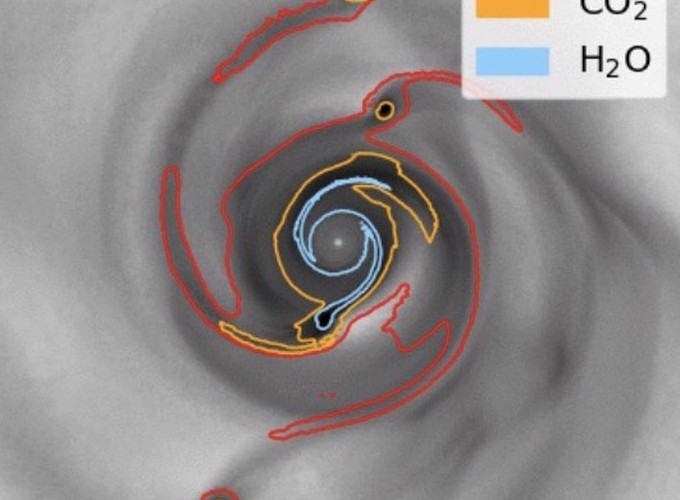In addition to displaying large scale spiral structure, gravitationally unstable discs are also prone to fragmentation. This process can create planetary mass objects within massive discs, and has been suggested as a possible formation mechanism for gas giants. I have investigated the chemistry in a disc where four planetary fragements are formed. These fragments, which we named ‘John’, ‘Paul’, ‘George’ and ‘Ringo’, were between 3 and 10 times the mass of Jupiter. I was able to follow the chemical evolution of all of the material as it formed them, leading to some interesting discoveries. I identified chemical species that were very abundant in the fragments – including molecules like water (H2O), ammonia (NH3) and sulphur monoxide (SO2); species that were also abundant in the surrounding disc material and spiral arms – like carbon monoxide (CO), methane (CH4) and formaldehyde (H2CO); and species that seemed to trace the material surrounding the fragments – like the formyl ion (HCO+). In addition, I found that the molecular ‘snow lines’ in the disc (the locations at which molcules in the gas phase freeze out into ices on dust grains) were significantly affected by the dynamic evolution of the disc, and the fragments developed their own snowlines.
The fragments can be relatively cold when they first form. This ‘cold start’ phenomena is very interesting, because it persists on timescales that are comparable to the timescales over which dust can be efficiently settled to the cores of the fragments. It is therefore plausible that this settling could occur before the ices of these grains have evaporated, changing the elemental ratios of the dust and gas that goes on to form planets. Therefore, the atmospheric composition of planets formed in this way should not necessarily follow the bulk chemical composition of the parent disc.
